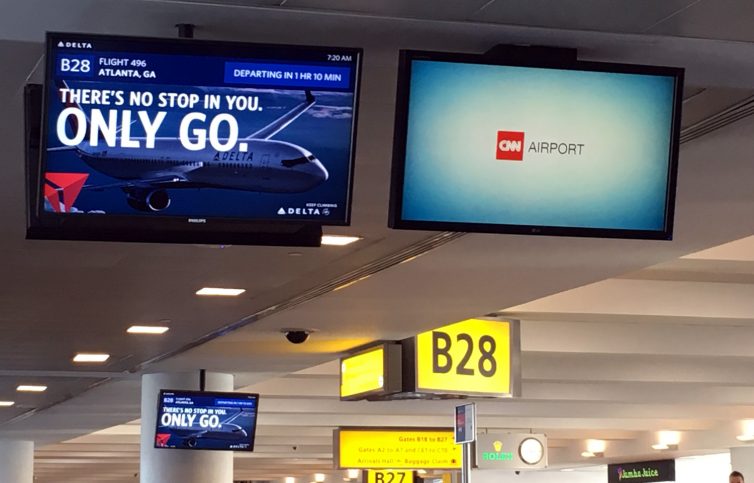
Watching the CNN Airport Network at JFK – Photo: Jason Rabinowitz
When I was growing up, I would have long layovers at airports. Typically looking outside at the planes would entertain me, but I also always made sure I had one of the TVs, hanging from the ceiling, in view. I could sit and watch the CNN Airport Network for hours and be good.
It was my mainstay of personal entertainment at the airport for many years. Of course there wasn’t too much competition back then. Today, I rarely even notice the TVs anymore. With having multiple personal devices and free WiFi, the competition for my attention has become fierce.

CNN headquarters in Atlanta
When I was recently making a trip down to Atlanta, I decided to reach out for a tour of the CNN Airport Network operations and learn a bit more about their station and how it works. I also wanted to see how they are working to stay relevant, with all the other options out there. I went in without many expectations, but I have to say I walked away with quite a few surprises.
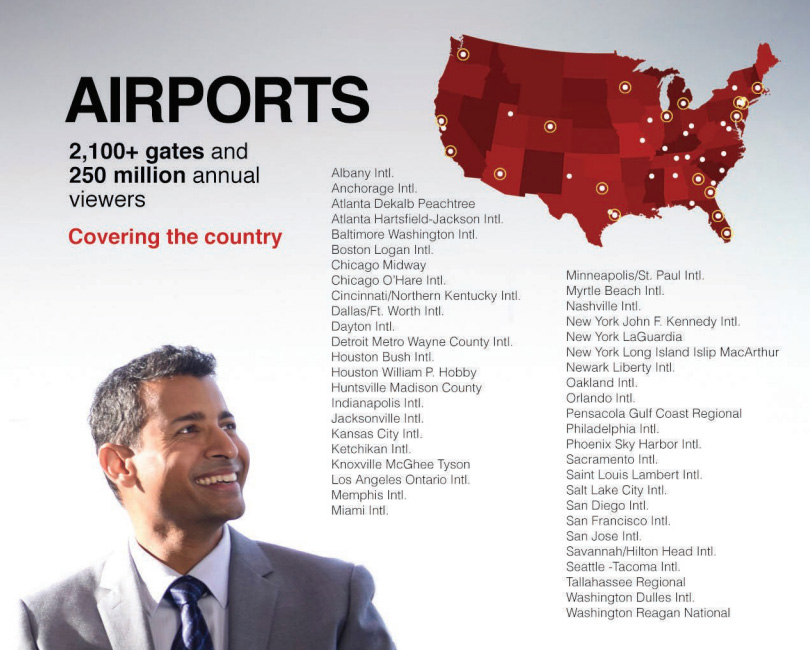
Current CNN Airport Network locations in the U.S. – Image: CNN
The CNN Airport Network officially went on air on January 20, 1992 at three different airports: DFW, ATL, and ORD. It is currently in 47 U.S. airports (plus Bermuda), and they plan to bring more online soon. The programming of the channel has drastically changed over its history. When it first went live, the Gulf War was happening and people wanted information quickly. Providing live news at airports made sense. As things have changed, so has the needs of the viewer.
Although it is under the bigger CNN umbrella, the network operates on its own with a dedicated staff, including three of their own reporters. It offers 24-hour programming with typically 35% news and weather, 25% live sports, 15% lifestyle, 15% travel, and 10% local/regional information. They offer some of their own unique programming and they can also pull clips from the large Time Warner catalog (TBS, TNT, Cartoon Network, etc).
If you hate traveling because you are missing the “big game,” then you will be happy to know that Airport Network has partnered with many sports organizations to show major NFL, NBAA, NCAA, and MLB games. Personally, I am not one that “needs” to see a game, but I understand how important this can be for some folks (and I am guessing more than one person has missed their flight because of a game on the Airport Network).
Out of all the programming options, the one you least likely want to see is the emergency messaging. If there is something going down (safety, weather, missing child, etc), airports can control customized messages on the screens. That is one of the few parts that the airport has control over locally.

CNN logo at the entrance of their building
Because of the audience and viewing location, CNN Airport Network has to think things through a little differently. For people watching TV at home or on their devices, they aren’t too far away from the screen. At the airport, they might be sitting at a distance, so Airport Network makes sure that their font is larger and easily viewable from a distance — things you probably wouldn’t even notice until told (like now).
All the advertisements are done through the Airport Network and not pulled from the main CNN feed. The nice part for the advertisers is they know their audience: travelers. But are people watching?
According to Nielson ratings; yes… a lot. There are 250 million viewers per year and the average viewing time is 52 minutes. That is a lot of time. Most of that is not just people sitting and watching non-stop, but it is one of the many tools that people use for information and entertainment.
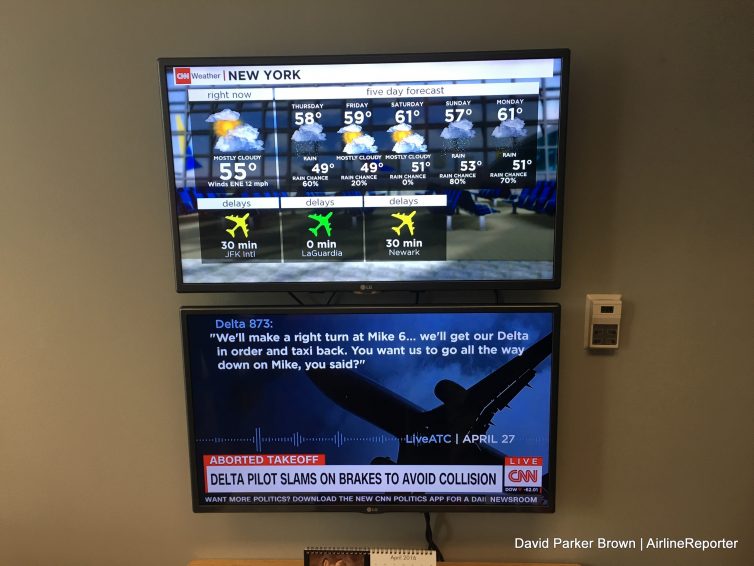
Up top shows the Airport Network, below is live CNN feed
The CNN Airport Network is in the large CNN Center in downtown Atlanta. For my visit, I needed to check in, get a badge, be checked by security, and wait in the downstairs lobby. Any guesses what was playing? That’s right — CNN. Soon, I went upstairs to the CNN Airport Network, which had their own office suite and control room. To begin, I sat down with Alison Hashimoto, VP Programming & Production, to learn more about the network.
On her office wall were two TV screens. Up top was the live feed of what was being shown on the Airport Network all across the country, and below was what was being shown on CNN. During our chat, she apologize for her attention changing to the monitors and told me to take a look. While the upper screen showed the weather, the bottom showed a story about an airline incident. It was not a huge incident, but CNN Airport News does filter out certain stories. I was curious how this all played out.
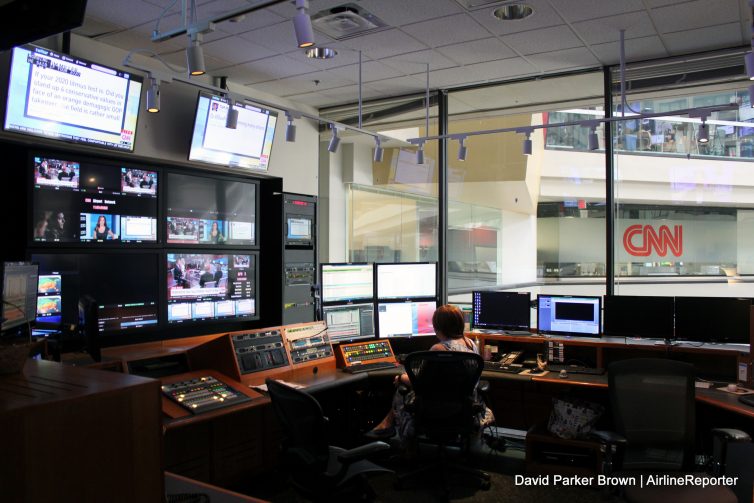
The CNN Airport Network Operations Center
The goal is to inform, entertain, and not freak out the viewers. Whereas at home, you have the ability to turn the channel (or even the TV off), you do not have that choice in the airport. If a story is not family friendly or involves a negative travel-related story, it might not make it onto Airport Network. In the end, Alison is typically the one who makes the call if something airs or not. But in the cases where stories pop up unexpectedly, those in the control room need to make the decision on the fly (pun intended).
Often, the people at Airport Network are told or can see ahead of time what stories might be an issue and plan around them. Others, they might be caught off guard. There is a 10-second delay between programming on CNN you see on TV and it airing on Airport Network, which gives them a little wiggle room.
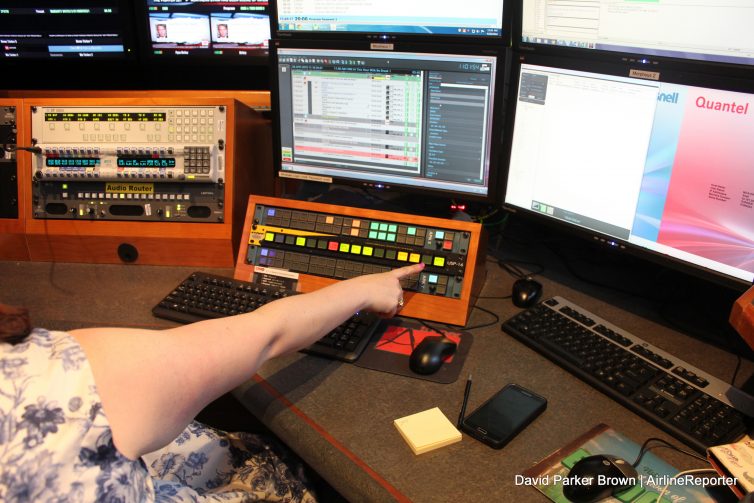
The button that pulls CNN program on CNN Airport Network
In this case, it turned out that the Airport Network did not know this story was going to air. It was not placed in the schedule and was caught by one of the technicians live. To the person at the airport, it just looked like a seamless transition from the previous story, to some weather information, then back to programming. When they know ahead of time that a story won’t be aired (not just aviation, but others), then they can plan ahead to put on some original content, a clip of another show, or get creative. Now, when bigger, long-term, stories happen, then things can get a bit more complicated. Now when you see the weather on the CNN Airport Network, you will always wonder if that is normal (they do show it often) or a story is being cut.
Normally there are two people in the control room at any given time. If something goes down, and they need to cut the “live” CNN feed, there is one big(ish) button that they push. I was sort of hoping for a red button, where you need to lift a clear cover to push it, but I guess the green/yellow button does its job.
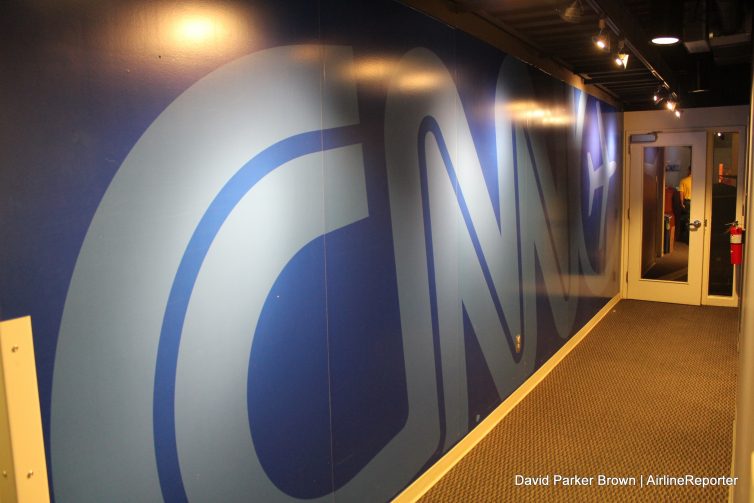
CNN with an airplane
If you run your own airport, then CNN provides different plans and will work you to get what you need. With the larger deals, CNN will handle all the installation and set up, the airport hits the “on” switch and then Airport Network provides the programming. With high-speed internet, instead of bulky satellite dishes, and flat-screen TVs, it has become easier to outfit an airport than it had been previously.
If you are a passenger and have feedback — they are listening — feel free to Tweet them: @CNNAirportNet. If they get a lot of negative feedback on content, they might change it, not just for the one airport, but system-wide. And of course, they love to hear things you like about their work too!
The question I went into my tour with was: are they still relevant? Very much so. They aren’t the same as when they first started and they will continue to grow into the future. People might not get as much information from TV as they used to, but they are better multi-taskers. I know I do not just sit there watching CNN Airport Network anymore, but I will be on my laptop, checking my phone, and also glance up to see if there is anything of interest.
Next time you are in an airport, take a look around. If you see one of the Airport Network screens, take a few moments and see what has changed — you might be surprised.
Since I was already there, I was able to take a tour of the larger CNN facility and just for a little comparison, here are a few photos:
- The CNN overall newsroom
- This is the bigger CNN control room

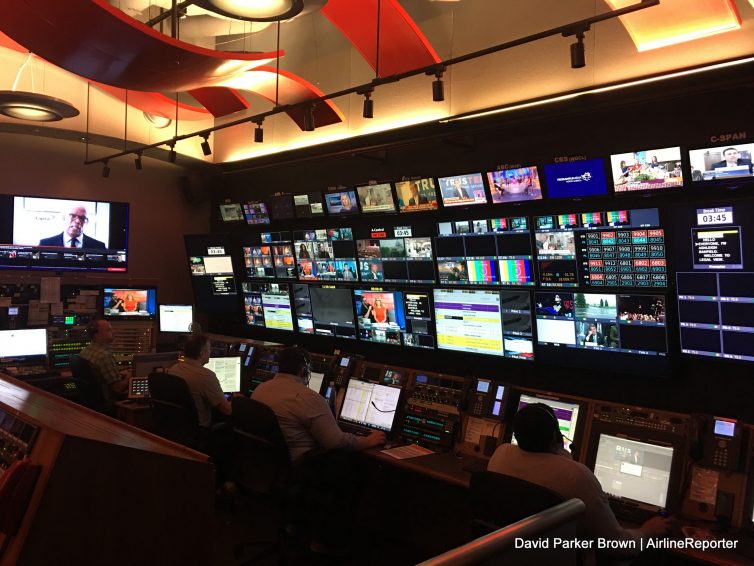
Don Lemon & Wolf Blitzer vs Anthony Bourdain & Anderson Cooper…. sigh….. Plus if we can get the airports to turn down this constantly blaring CNN just a wee bit….
My personal feelings towards CNN aside, thanks for the writeup David
Another good thing about DTW, they MUTE CNN!
nice